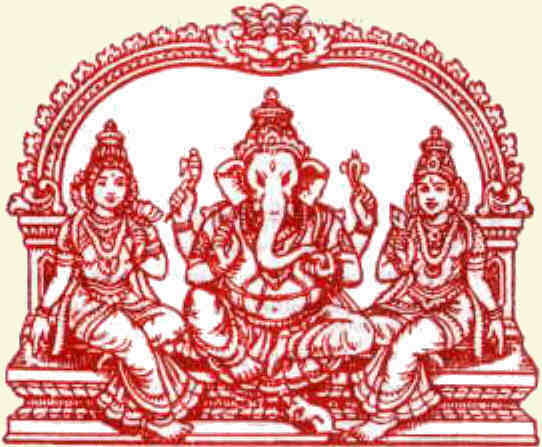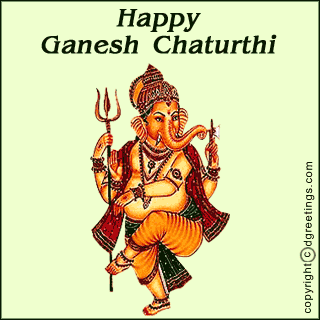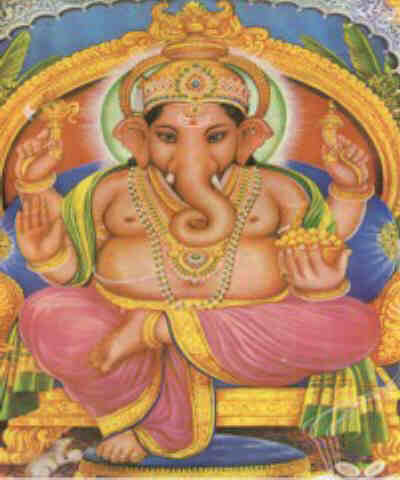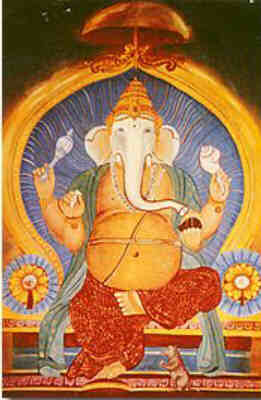PLEASE
CLICK HERE TO WRITE TO “ALL FOR TODAY”
John Canu's daily Internet
(and other, if any) activities
updated 020831 00:19 UT
![]() site safe for children
site safe for children ![]()
Tuesday
2003 Sep 10 is Julian 2452528
= 2 x 2 x 2 x 2 x 19 x 41 x 277 —
5763 tishri 04
1994 paguem 05 1718 al-nasi 05
1423 rajab 02
1924 bhadra 19 (religious lunar calendar bhadrapada
04): Ganesh Chaturthi – Vinayaka Chathurthi (Tamil
Nadu) – Haritalika Chaturthi
1381 sahrivar 19 210 fructidor 24 159 'izzat
03
China-Republic - 91 - 08 - 04 // 78 - 19 / ren-Horse - 08 -
04
12 baktun / 19 katun / 09 tun /
10 winal / 05 k'in //
06 - chikchan //
18 - mol / g7
Explanation of the calendars of India — Hindu Festivals 09-23 Sep 2002
— SAINT AUGUSTINE ONLINE: (in the original Latin): Confessiones — de Civitate Dei — de Trinitate — de Dialectica — de Fide et Symbolo — de Catechizandis Rudibus — Sermones — Regula Sancti Augustini
— (in English translations): — The City of God — Confessions — Confessions — Confessions — Confessions — Confessions — De Dialectica — Enchiridion — Expositions on the Book of Psalms — On Christian Doctrine
In Egypt, XXVIII Aug was the Nativity of Nephthys. Nephthys was the daughter of the earth god Geb and the sky goddess Nut, and the sister of Isis. She was the goddess of the dead.
 -
-
 The
festival of Vinayaka (=Ganesh) Chathurthi is celebrated in the
month of bhadrapada on chaturthi (= 4th) day which comes after the new moon.
It is celebrated all over India. People celebrate this day in a variety
of ways. For anything to go well, we pray Lord Vinayaka. He is the first
to be worshipped whenever we start anything. He relieves us from all our
difficulties. He solves our problems. Lord Vinayaka has got an elephant
face and human body. He is worshipped by many names like Vinayaka, Ganesha,
Pillayar, Vigneshwara, Gajanana, Ganapathy, Mooshika Vahanaa, Modhaga priya
etc. He rides on an animal called mooshika (a large kind of rat). In our
houses we celebrate this pooja in a grand manner. We decorate the floor
with kolams using rice flour. On that day we buy a new Vinayaka idol(made
of clay). We also buy a decorated umbrella to place behind the idol. On
a wooden plank, plantain leaf is placed and raw rice is spread over it.
We place the idol on this and decorate with flowers and perform pooja. Vinayaka
likes a dish called mothagam (kozhukkattai). So different varieties of kozhukkattai
are prepared and offered to the lord on this day. It is the special item
on this day. On the next day, punar pooja is done. This is the pooja which
acts as an ending to the festival. After this we remove the idol from its
place. On the next day after punar pooja, we immerse the idol in water in
the sea, well or pond. In cities like Mumbai, Chennai etc. large Ganesha
idols (a bout 6 ft) are placed in common places and pooja is performed in
a very grand manner. People all around worship the lord. Prasadams (Dish
offered to the lord) are distributed to the people. After the pooja is over,
the idol is taken in a grand procession and immersed in the sea. For this
pooja, different flowers are used. Erukkampoo(calotropis), thumbaipoo(white
small flowers and arugampul( a type of grass) is very special for the lord.
Different varieties of fruits are also offered.
The
festival of Vinayaka (=Ganesh) Chathurthi is celebrated in the
month of bhadrapada on chaturthi (= 4th) day which comes after the new moon.
It is celebrated all over India. People celebrate this day in a variety
of ways. For anything to go well, we pray Lord Vinayaka. He is the first
to be worshipped whenever we start anything. He relieves us from all our
difficulties. He solves our problems. Lord Vinayaka has got an elephant
face and human body. He is worshipped by many names like Vinayaka, Ganesha,
Pillayar, Vigneshwara, Gajanana, Ganapathy, Mooshika Vahanaa, Modhaga priya
etc. He rides on an animal called mooshika (a large kind of rat). In our
houses we celebrate this pooja in a grand manner. We decorate the floor
with kolams using rice flour. On that day we buy a new Vinayaka idol(made
of clay). We also buy a decorated umbrella to place behind the idol. On
a wooden plank, plantain leaf is placed and raw rice is spread over it.
We place the idol on this and decorate with flowers and perform pooja. Vinayaka
likes a dish called mothagam (kozhukkattai). So different varieties of kozhukkattai
are prepared and offered to the lord on this day. It is the special item
on this day. On the next day, punar pooja is done. This is the pooja which
acts as an ending to the festival. After this we remove the idol from its
place. On the next day after punar pooja, we immerse the idol in water in
the sea, well or pond. In cities like Mumbai, Chennai etc. large Ganesha
idols (a bout 6 ft) are placed in common places and pooja is performed in
a very grand manner. People all around worship the lord. Prasadams (Dish
offered to the lord) are distributed to the people. After the pooja is over,
the idol is taken in a grand procession and immersed in the sea. For this
pooja, different flowers are used. Erukkampoo(calotropis), thumbaipoo(white
small flowers and arugampul( a type of grass) is very special for the lord.
Different varieties of fruits are also offered. Elephant-headed Hindu god Ganesh (or Ganesha, Vinakaya) is the son of Shiva and Parvati. Considered the remover of obstacles, he is the first god invoked at the beginning of worship or a new enterprise. His image is often seen at the entrance of temples or houses. He is a patron of learning and letters. He broke off one of his tusks to use as a stylus in writing the Mahabharata (= “Great Epic of the Bharata Dynasty”) from Vyasa's dictation. He is also the chief of the ganas (attendants of Shiva).
In pictures Ganesh is usually colored red, pot-bellied, with four arms that may hold a noose, a goad, a pot of rice or confections, and his broken tusk. He rides on a rat.
Parvarti formed him from the rubbings of her body so that he would stand guard at the door while she bathed. When Shiva arrived, unaware that this was his son, he was enrage at being kept from his wife and sent his attendants to fight Ganesh. They cut off his head. When grieving Parvarti explained, Shiva repented and promised that he would give Ganesh as substitute head that of the very first creature he met. It turned out to be an elephant.
Ganesh was worshiped by a small medieval sect, the Ganapatya. But in modern Hinduism he is a subsidiary deity. In 1893 nationalist leader Bal Gangadhar Tilak [23 July 1856 – 01 August 1920] sought to widen the popularity of India's independence struggle (until then mostly confined to the upper classes) by connecting it to religious symbolism as he organized the festival of Ganesh. It is observed as a national holiday throughout India, with particular fervor in the state of Maharashtra.
 The festival of Ganesha Chaturthi, comes
in the Bhadrapada month. This
festival was initiated by Bal Gangadhar Tilak in Maharashtra and
soon its spread to other states. In Andhra Pradesh, it is observed with
pomp and splendour. Lord Ganesha is the God of wisdom and success and
remover of all obstacles. According
to the scriptures, not only human beings, but even the various divinities
worshipped Lord Ganesha on different occasions. He is propitiated at the commencement
of every important endeavor, be it construction work, marriage or the
starting of a new account book. Vinayaka Chaturthi offers a merry occasion
for youngsters. They gather
various kinds of leaves and flowers, prescribed for the puja. The beautifully decorated images are taken
out in processions to the accompaniment of religious songs and music.
Various cultural programmes, competitions etc. mark the 10 days period.
These idols are worshipped regularly for several days, to invoke the
blessings of god and later immersed in sea or water.
Modakas, are offered to god, and later distributed to the devotees,
as ‘prasada’.
The festival of Ganesha Chaturthi, comes
in the Bhadrapada month. This
festival was initiated by Bal Gangadhar Tilak in Maharashtra and
soon its spread to other states. In Andhra Pradesh, it is observed with
pomp and splendour. Lord Ganesha is the God of wisdom and success and
remover of all obstacles. According
to the scriptures, not only human beings, but even the various divinities
worshipped Lord Ganesha on different occasions. He is propitiated at the commencement
of every important endeavor, be it construction work, marriage or the
starting of a new account book. Vinayaka Chaturthi offers a merry occasion
for youngsters. They gather
various kinds of leaves and flowers, prescribed for the puja. The beautifully decorated images are taken
out in processions to the accompaniment of religious songs and music.
Various cultural programmes, competitions etc. mark the 10 days period.
These idols are worshipped regularly for several days, to invoke the
blessings of god and later immersed in sea or water.
Modakas, are offered to god, and later distributed to the devotees,
as ‘prasada’.
Legends
Shiva Purana
There are various legends related to one of the most loving festivals
of India, Ganesh Chaturthi. Legends say that, lord Ganapati was created
by goddess Parvati, wife of Lord Shiva. She has created him with the
dough she used for taking bath, as she needed one doorkeeper while she
takes bath. For this Goddess Parvati has created one doll first and breathed
life into him. And this day is known as the birthday of lord Ganesha.
It is also said that, while Goddess Parvati was taking her bath Lord
Shiva happened to come there and as Ganesha didn't know him, he didn't
allow him to enter the house. As a result Lord Shiva got angry and he
beheaded Ganesha. But after realizing the real fact lord Shiva fixed
the head of an elephant in place of Ganesha's head and thus the appearance
of Lord Ganesha with the head of an elephant happened.
Another most popular legend found in Skanda Purana says, once
Ganesha was invited for a feast in Chandralok. The god, known for his
ravenous appetite, stuffed himself with laddoos. When he got up to walk
after the meal, he could not balance because of his huge stomach and
stumbled. As he fell, his stomach burst and all the laddoos came rolling
out. The moon could not contain himself and began laughing. Enraged,
Ganesha cursed the moon, causing him to vanish from the universe. However
because of the moon's absence, the whole world began to wane. So the
gods asked Shiva to persuade Ganesha to relent. The moon also apologized
for his misbehaviour. On Shiva's intervention, Ganesha modified his curse.
He announced that the moon would be invisible on only one day of a month,
and would be partially seen for the Ganesha Utsav most part.
Lord Ganesh or affectionately called Ganapati is commonly depicted in
homes and offices throughout India as chubby, smiling and a little mischievous.
His devotees ascribe to Ganesh the ability to bestow wisdom and wealth
upon us humans, thus making him probably the most popular deity in the
Hindu pantheon. To repay Ganesha's bounty, in India, especially in Maharashtra
and nearby areas around September every year the entire population celebrates
the ten day festival of Lord Ganesha's birthday. In the Hindu lunar month
of Bhadra, virtually the entire population of the city celebrates his
birth in the ten-day festival of Ganesh Chaturthi.
The day is also called Dagadi Chautha, or 'stone-throwing fourth day',
in some places, stemming from the belief that if one inadvertently sees
the moon on that night, one should throw stones on his neighbour’s roof
to avert any calamity arising from the curse. In Maharashtra, the great
festival of Ganesha begins on this day, with his idol being ceremonially
installed. The next ten days, before the beginning of the inauspicious
dark half of the month, are spent in praying to the god. These days are
considered especially auspicious due to Ganesha's presence in the idol.
Vighneshvar, the remover of obstacles, reciprocates by using his powers
all through the year.

Ganesha Puja
As Lord Ganesha is considered to be the common avatar of both Lord Shiva
and Lord Vishnu, he is worshipped by both the hindu sects, the Shaivites
and the Vaishnavites.
During festival of Ganesh Chaturthi, the idol of Ganesha is installed
in an altar at home. The family members along with the help of a pandit
(a hindu priest) perform puja (prayers) at home every morning and evening.
They place offerings like flowers, rice & coins in front of the image
of Lord Ganesha.
In the prayers that follow, it is customary to make 108 salutations to
Ganesha. They read shlokas (invocation) and the Ganesha upanishad. Aarti
(worship with a holy flame) is performed and hymns are sung. The singing
of hymns has become a popular event during this festival.
These hymns are accompanied by the clanging of small musical instruments
or gongs (called jhanja).After the ceremony, sweets and fruits are distributed
to the guests and neighbors.
CELEBRATIONS
The celebrations of ganesh chaturthi are unique in itself with its fabulous
festivities. Before the ten-day rite begins, the house and devotees must
acquire a superlative state of purity. This is accomplished by cleaning
or whitewashing the house or cleaning the place where the idol is to
be placed.
During the festival small images are purchased from shops and brought
into homes and enormous images are moulded from clay by professional
craftsmen and set up in pavilions in every district and suburb. On the
tenth day of the holiday or "puja" all the industrial-size images are
loaded on flat bed trucks while the smaller ones travel in the back seat
of cars or are simply carried by hand on the urban railways to the beaches
of the city where this most beneficent of gods is immersed and his clay
form dissolved in the waters of the Arabian Sea.
The event is now a colossal celebration and perhaps the world's largest
religion-inspired beach party. Processions from all over Bombay commandeer
the city's already congested road system riding on and walking beside
trucks bearing the Ganapatis. Loud speakers shriek from the truck cabs
and processionals bang drums and gongs while the orange-capped devotees
on the back of the trucks shower themselves and everyone in their wake
with red powder called gulal.